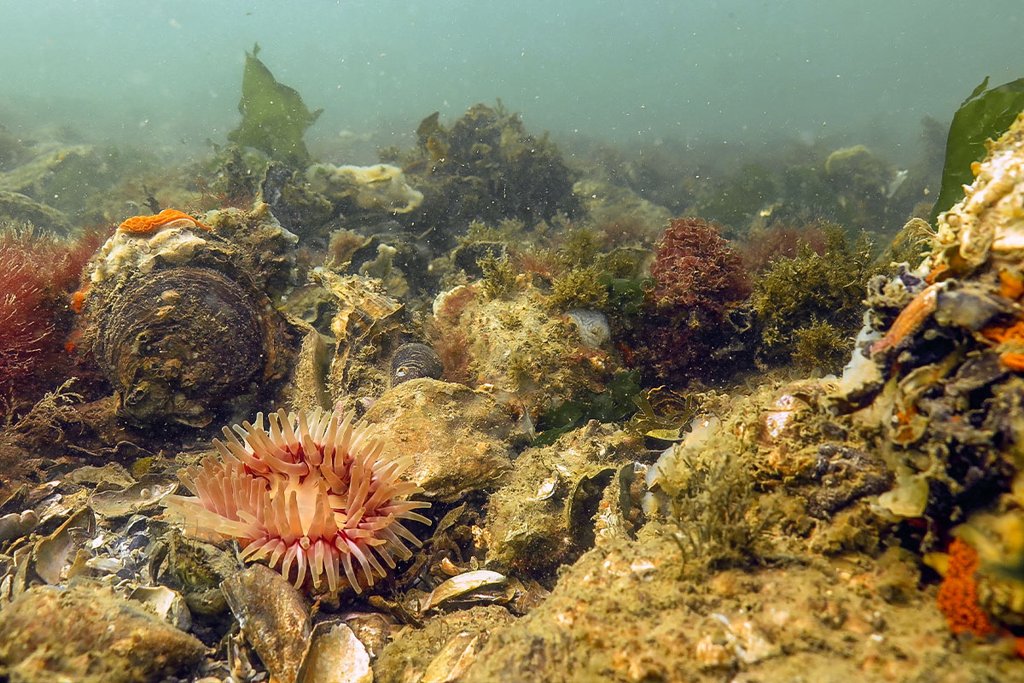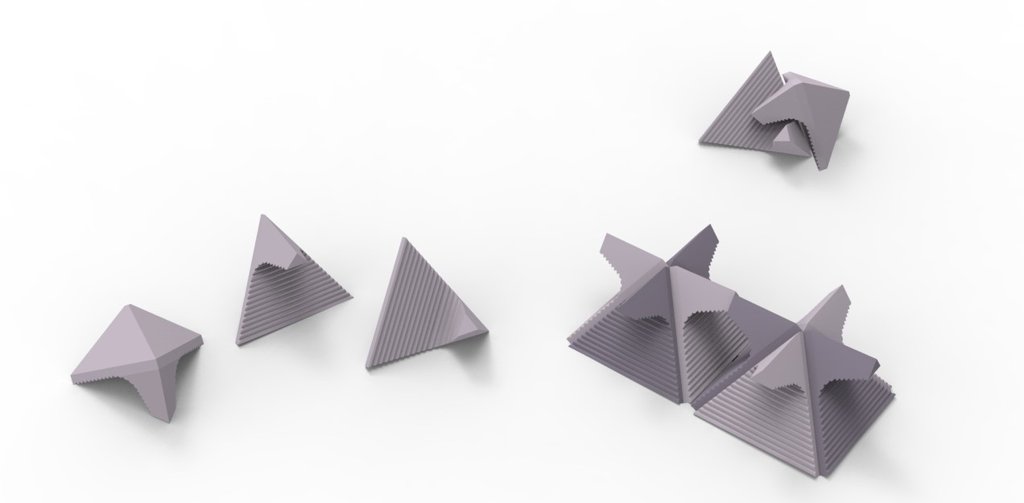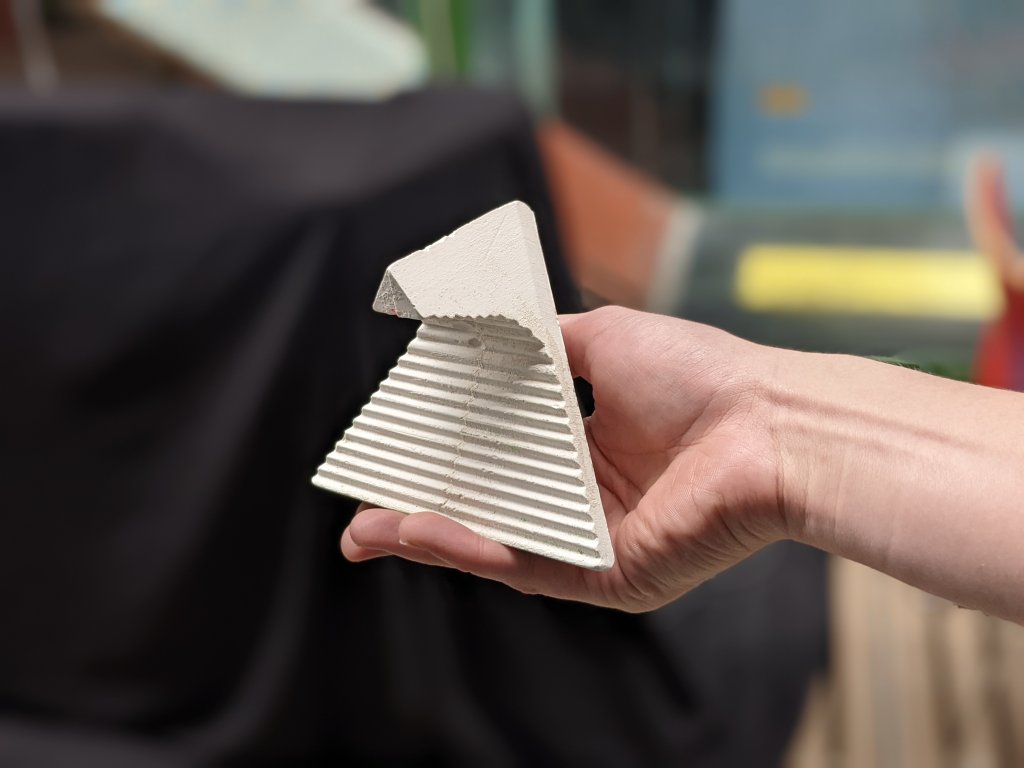The world’s natural reefs are rapidly declining. As they are essential to healthy marine ecosystems, we need to turn around this decline. Recently, marine biologists found a new method for restoring flat oyster reefs: oyster larvae settle on a small biodegradable product which is then ‘sown’ onto the ocean floor, to naturally form oyster beds. The physical design of this product was the objective of this study. As the product degrades into biologically safe components, large areas of reef can be restored in a minimally invasive way.
During the design phase, we had no reference model as no such products yet exist. So, the project started with exploring basic shapes and their behaviour underwater. These were then altered to fit the purpose, and after several iterations, the final concept was ready for testing.
The product has a triangular pyramid shape, so it can be efficiently stacked, exposing the surface the larvae have to settle on. The design ensures that this surface always has access to flowing water, an essential requirement for the organisms.
The product fits in your hand, which means any community is able to do reef restoration, as there’s no need for large or specific equipment. Moreover, it’s easy to transport to anywhere in the world and make an impact everywhere.
In the Dutch North Sea, a majority of the reefs where the European flat oyster (Ostrea edulis) was common, have now disappeared. Oysters in particular play a key role in reef ecosystems and are therefore the ideal starting point for their recovery. However, these oyster beds can no longer recover naturally; they are too few in number to breed and spread.
Therefore, there’s a need for active restoration. Several methods have been tested, however, these have not proven effective and have several drawbacks. The Reef Tile can make a real difference, as well for other organisms like corals.







